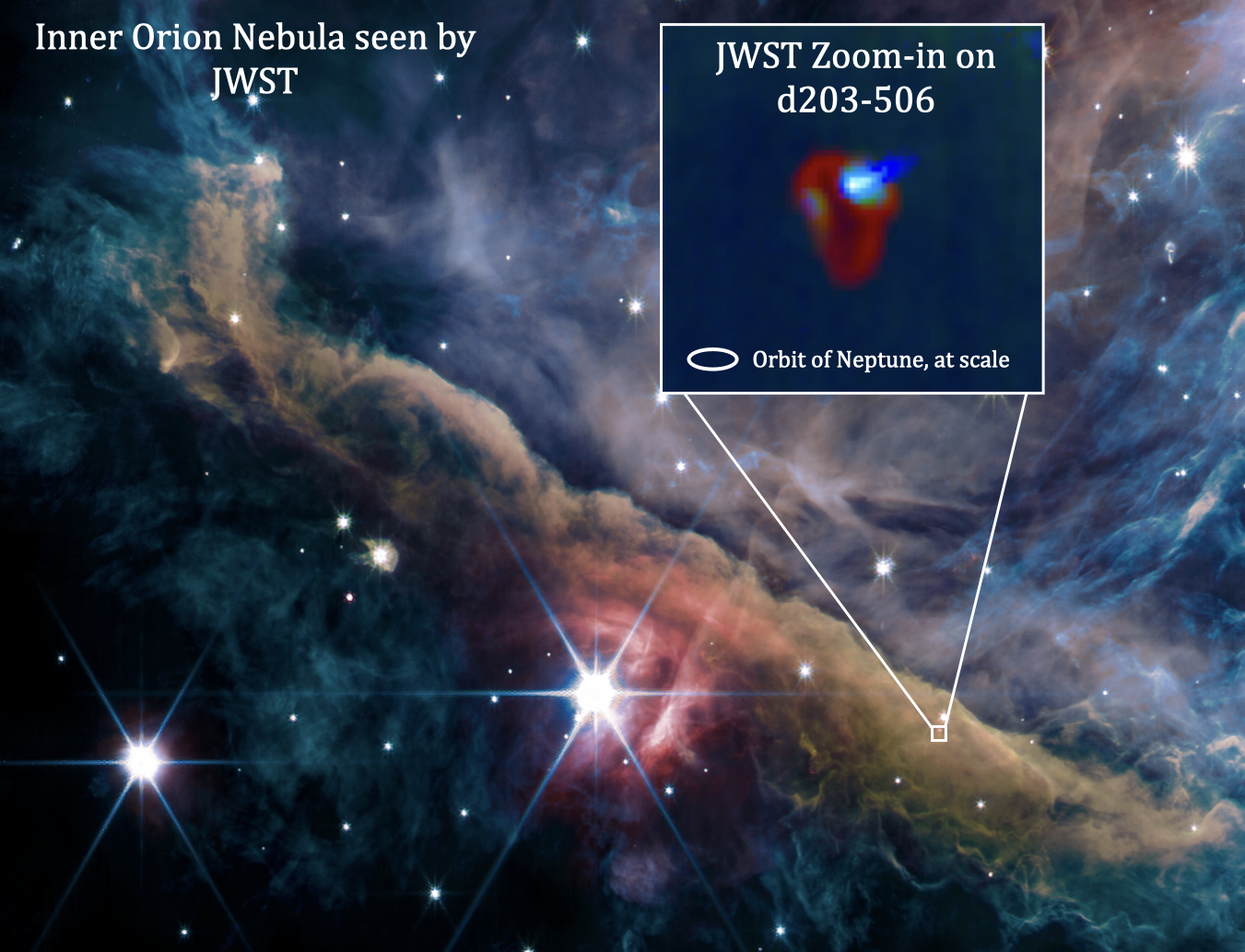 In a new study published in Science an international team of scientists, including astronomers from UK ATC in Edinburgh, demonstrate the critical role played by massive stars in shaping planetary systems.
In a new study published in Science an international team of scientists, including astronomers from UK ATC in Edinburgh, demonstrate the critical role played by massive stars in shaping planetary systems.
Using both the James Webb Space Telescope as well as the ALMA observatory, the team focused their attention on the Orion Nebula, a celestial nursery, to study how solar systems form. Through their research on protoplanetary disk d203-506, they uncovered the pivotal influence of massive stars in the genesis of these fledgling planetary systems.
These massive stars, about ten times more massive and notably 100,000 times more luminous than the Sun, subject any emerging planets in nearby systems to intense ultraviolet radiation. Depending on the mass of the central star in the planetary system, this radiation can either aid in planet formation or hinder it by dispersing planetary material. In the Orion Nebula, researchers found that the intense irradiation from massive stars would prohibit the formation of a Jupiter-like planet in the planetary system d203-506.
Pamela Klaassen, astronomer at UK ATC and co-author of the paper, said: “The combination of JWST and ALMA is opening up new ways of understanding the Universe. This study demonstrates the impact of massive stars on shaping planetary systems, shedding new light on their formation processes and opening up new avenues for studying the diverse mechanisms at play shaping solar systems like our own."
Read the Science paper.
